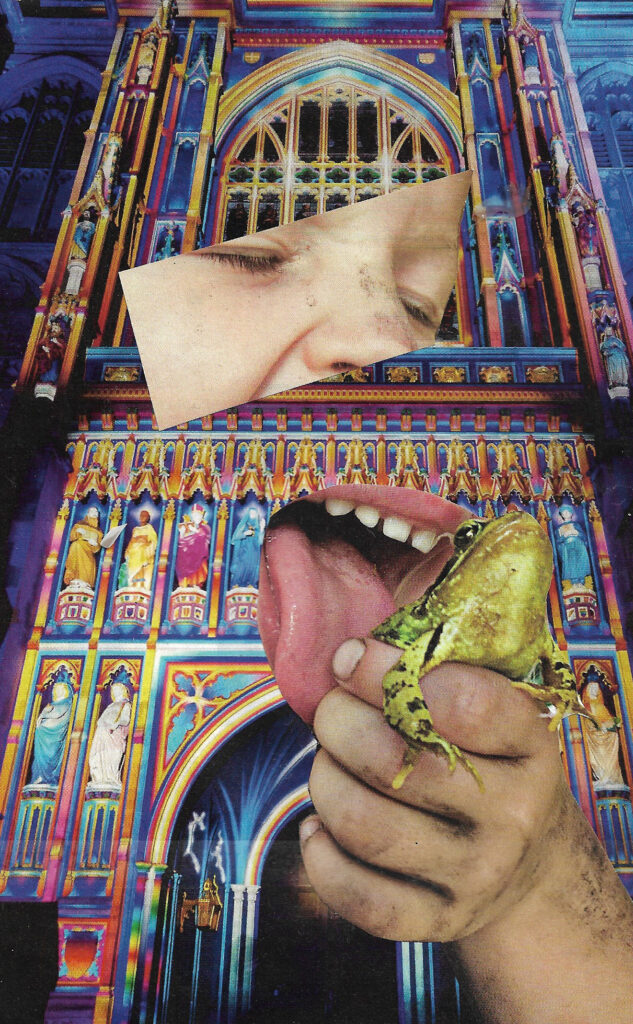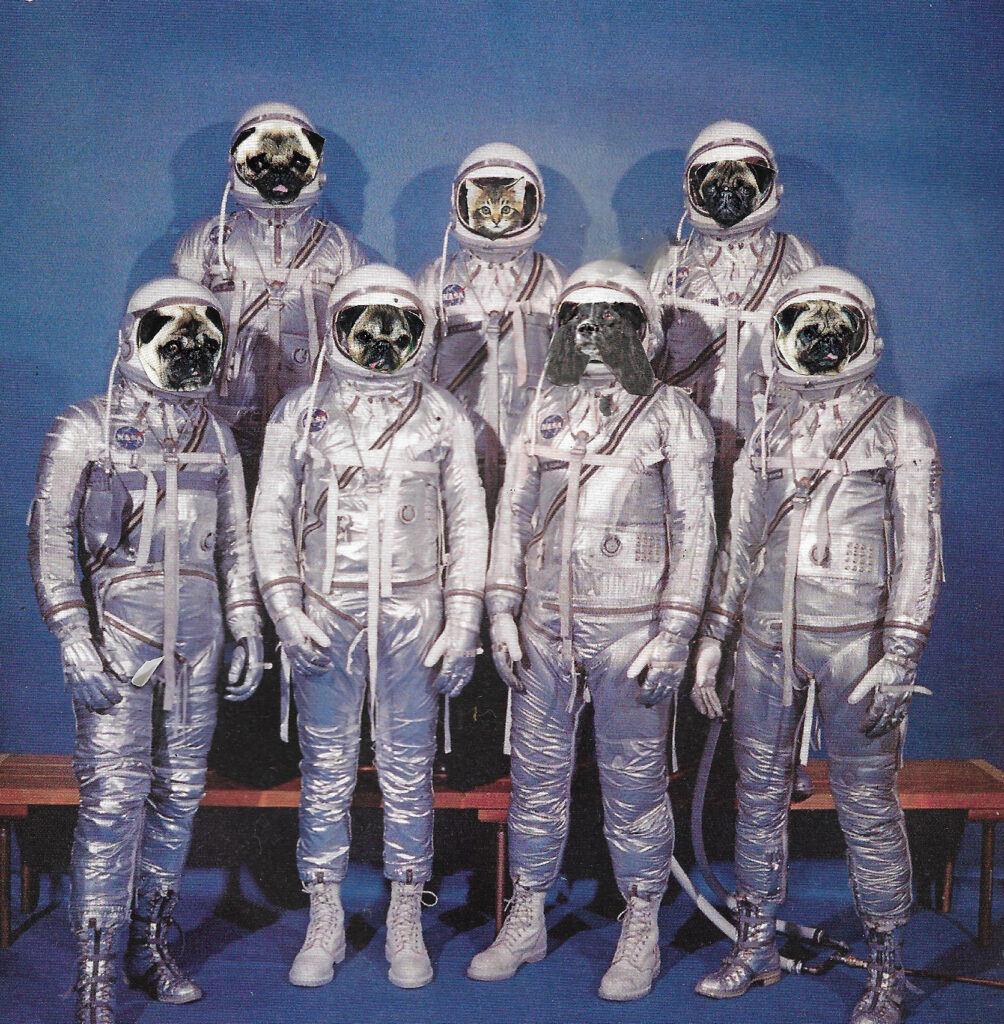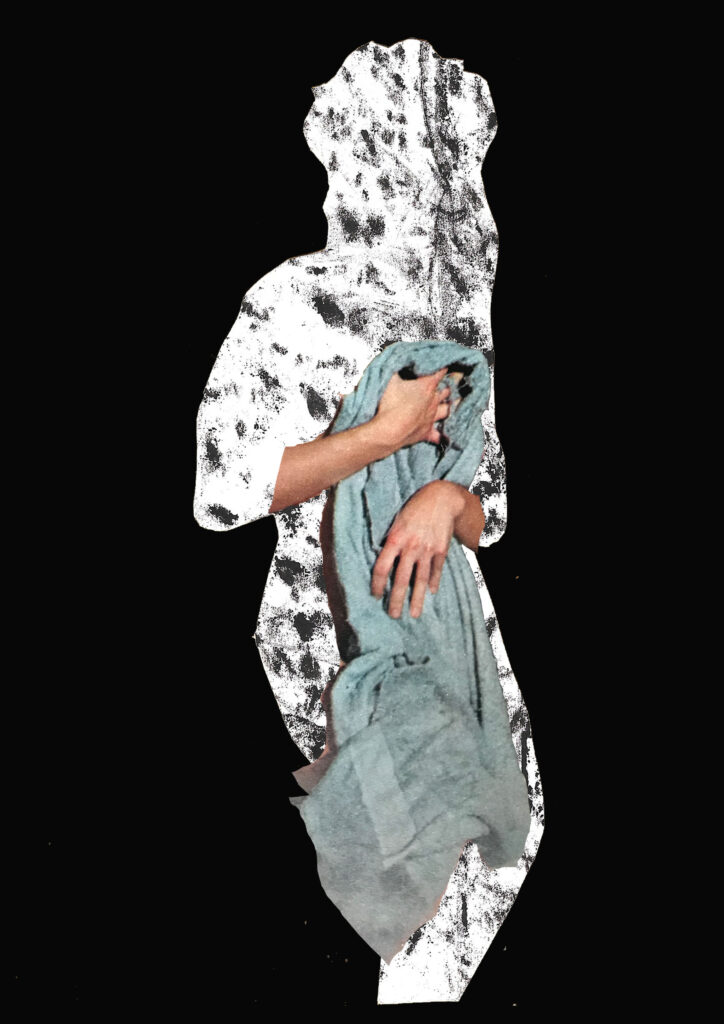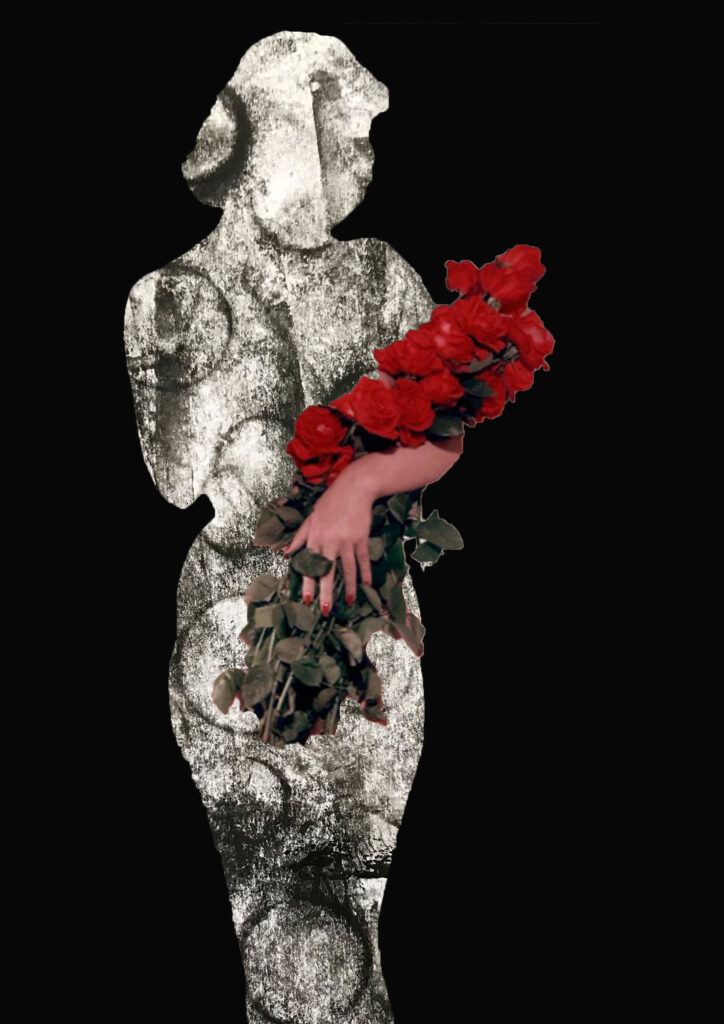Spring has arrived, the weather is getting warmer, and hopes are rising. Hopes of a summer, of gigs, and museums reopening. I recently came across Hollie Dewick’s work, and I realised how well it worked with our post-pandemic notion of fun. Her work, in a way, can be read as an overlap between bizarreness and tenderness; there’s humour within her artwork, but also a touch of nostalgia for simpler times. In this interview we discussed the physical aspects of her creative work, her recent exploration with animation, and the awkward overlaps between her artistic interests and developing a viable professional path.
Tell me a bit about your background. How did you decide to get into art?
I originally come from the suburbs in North London. Growing up, I was always told that the art scene was in South London, and that if you wanted to meet people and get into that environment, I had to live in South London. However, that just wasn’t feasible; I couldn’t afford it. That’s why Brighton was my main choice for University. Here, you still get to experience that sort of arty vibe without having to deal with the price and commuting of London.
After finishing my GCSCs, I did a foundation course on art and design at college. Afterwards, I wasn’t really sure what direction to go, but I realised I was spending a lot of time just looking through magazines, so I started taking that imagery and making my own through collaging. Now that I’m studying Graphic Design at Brighton University, I have carried on with the collage stuff because I enjoy collecting imagery.
Where do you source your images from?
Being in Brighton helps a lot because we have Snoopers Paradise, which is a place in the Lanes which is kind of a house clearance shop, and you can get lots of really old and vintage magazines there, such as Playboy. Additionally, Brighton Library and St. Peter’s Church library have massive archives of magazines, which are really helpful. They got magazines from the 70s, like Ideal Home and things like that where you can get all these cool pictures of wallpapers, and kitchens, really strange things. And finally, charity shops. There you can get books for like a pound with amazing pictures of the Wonders of the World, and vintage imagery like that.

Is most of your work physical or do you also work on digital?
When I was in college and I was learning how to use Photoshop, I relied more on digital collaging. Nowadays my process always starts off physically because I enjoy the analogue process of cutting images. Afterwards, I tend to scan the images into Photoshop where I do further editions, such as changing the cut marks, or cropping more. However, the pandemic has affected this process. Now I tend to rely more on digital collage because it means I get to use one image several times. When it’s physical, as soon as you cut it out, that’s it, you can’t use it again, whereas with Photoshop you can reuse it a million times.
You also explore the idea of sexuality within a lot of your pieces, why is that?
I really like the female form. I have done a lot of research around it, and about how the surrealists used it in collage as a way of freeing their subconscious and exploring their sexuality. Through that, I started getting into surrealist collages myself, and I got influenced by artists such as Max Ernst and Hannah Höch. I don’t exactly know where that interest stems from, I just think that the female body can be sexy, appealing, and arresting –which are aspects that I like to emphasise in my work. Female nudity has a shock appeal; if you’re flicking through a book and it has an image of nudity, it stops you.
You also mentioned that you have experimented with animation a little. How has that been?
I always really liked stuff like Wallace and Gromit and Terry Gilliam, so I have started exploring stop-motion animation. I have also been mixing my own collaging within it, doing a bit of cut-out animation. I recently made an animation of a girl jumping into a cup with Oreos on her breasts, so I just enjoy exploring that notion of weird and unexpected things happening.
Collage is an art form that often remains unacknowledged within the art world. How has your experience of reception been with your own work?
It’s a hard one. Moving forward with collage, I feel like I have learnt a lot, and obviously it’s a constant process of learning and evolving, but I feel like the reason I have started getting more into animation is because I feel like collage as an art form can be quite limited. I’ve learnt everything that I can from it. So now, the way forward is to push my collage into cut-out animation, and to make it more appealing to potential clients. Because ultimately, collages work as album covers, or even advertising, but I feel that the field of graphic design is evolving more into moving image because of social media.
In terms of reception, it’s been an interesting experience. Inspired by my pets which are a giant African snails, I once produced a collage of a snail. I thought it was a bit quirky, and my friend who is a musician really liked it, and decided to use it for his album cover. I thought it was strange that he liked it so much because a lot of people didn’t actually like it, they found it a bit weird. But he really liked it, which just goes out to show how subjective art is, and how people just like different things.

Has the pandemic affected your creative process?
It has been very hard, especially with lockdown, you can’t go out to buy magazines, or make photocopies, or flip through books to get inspiration. I’ve seen other collage artists going more in the direction of finding stuff in the streets, and using stuff around the house, which is something that I’ve done myself too. For example, for my first animation, I used stuff like a crisp packet, some Oreos, and stuff I found around my house, which has helped me stay productive throughout lockdown.
What are your main inspirations?
There are a lot of collage artists that inspire me on Instagram. For instance, @butternutcollage, who is based in Hove. However, Instagram as a source of inspiration can be a bit tricky because sometimes it makes me feel like everything has already been done. How do you make your art unique? It’s hard to stand-out. I have asked myself, when I finish Uni, what will I do? People that are really good at animation are like in their 30s or 40s, so it just makes me feel like I still have a long way to go, and during that time it’s not like I can just enjoy myself, I also have to work on a cafe to sustain myself. It’s quite hard.
Have you got any upcoming projects that you’re looking forward to?
At the moment I’m working on my final project for Uni. My subject matter is dementia, because it has affected both my grandmas. I think it’s interesting to tackle serious subjects with stop motion, because it allows you to do it a light-hearted way. I’ve been thinking a lot about who to aim it at, originally it was going to be for children, but I thought, children don’t really know much about dementia, and in a way, they don’t need to know because if their grandparents have it, they are able to understand it. For them it is as simple as them just getting a bit forgetful, or them being silly. So instead, I’m thinking of aiming it at a higher age bracket.
To see more of Hollie’s work…
Instagram: @stickitbby



